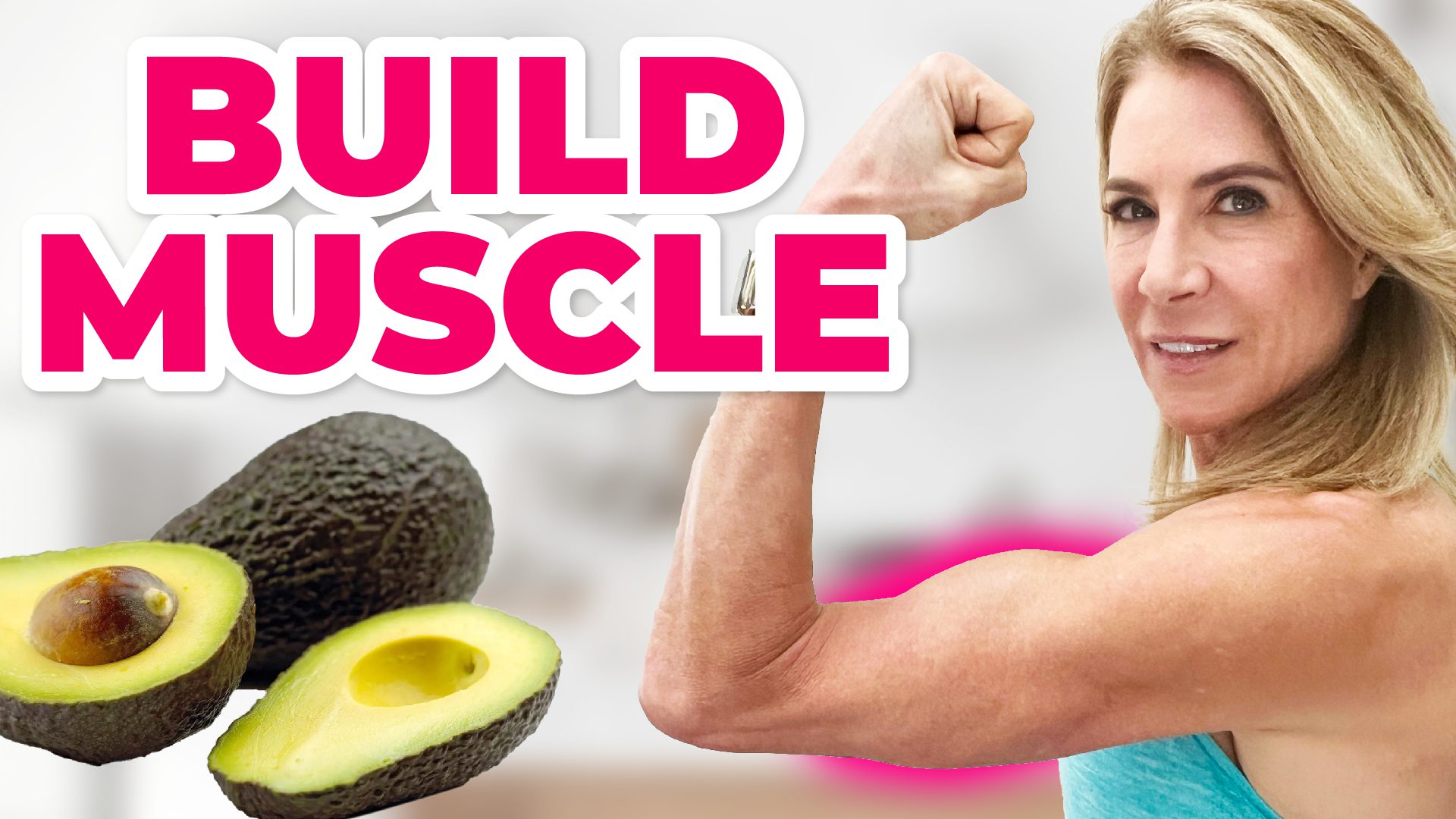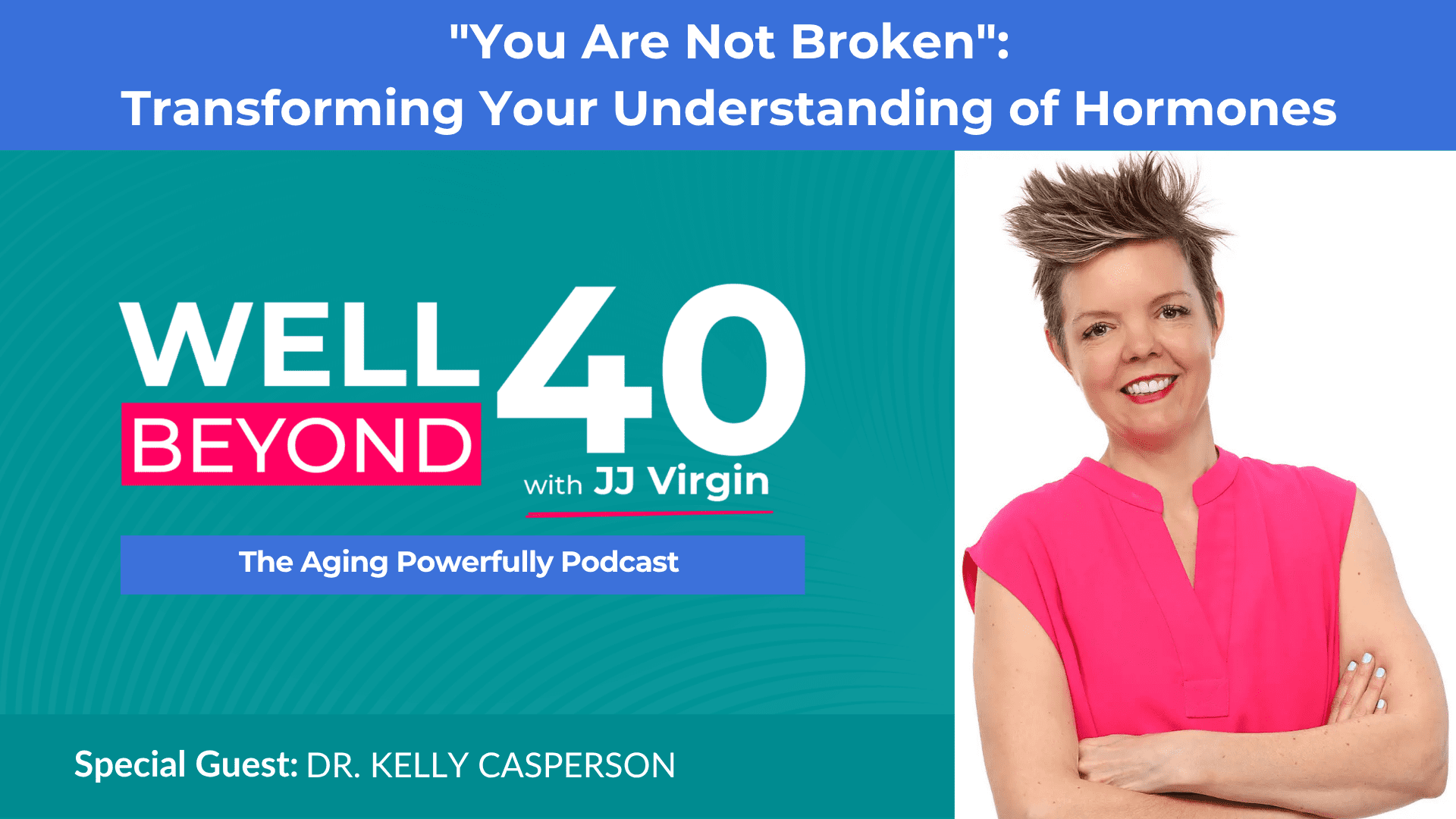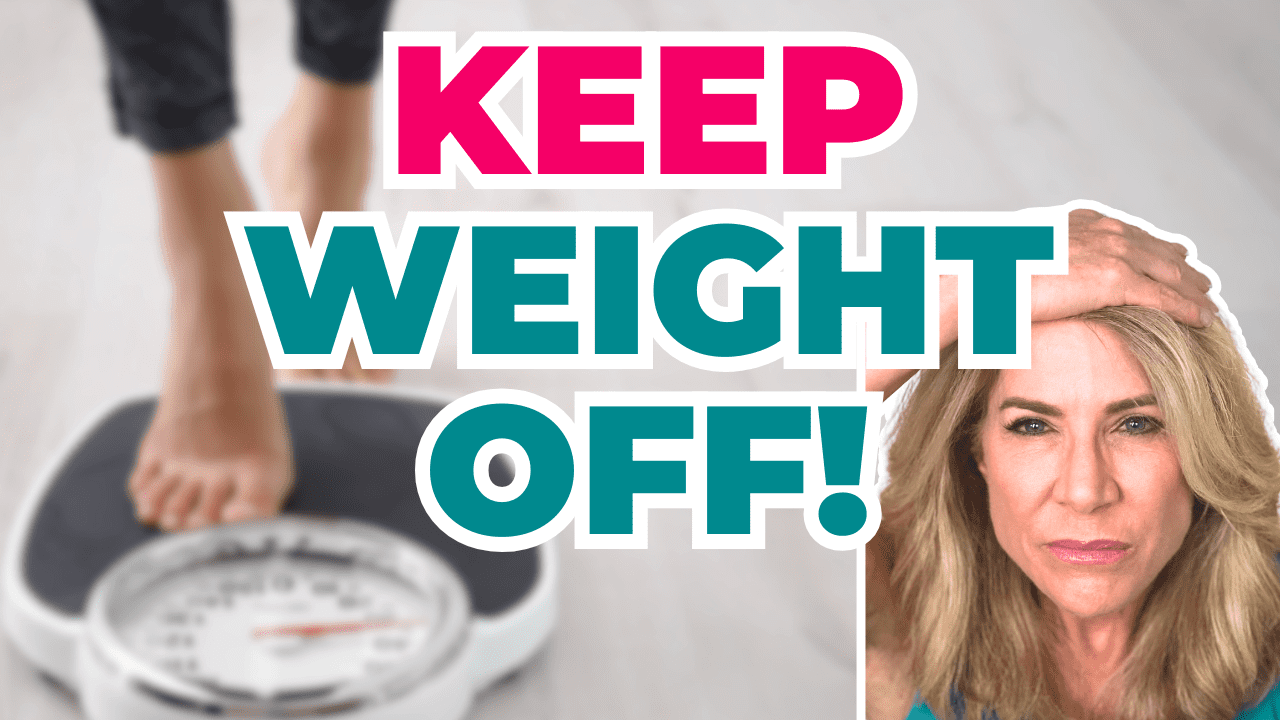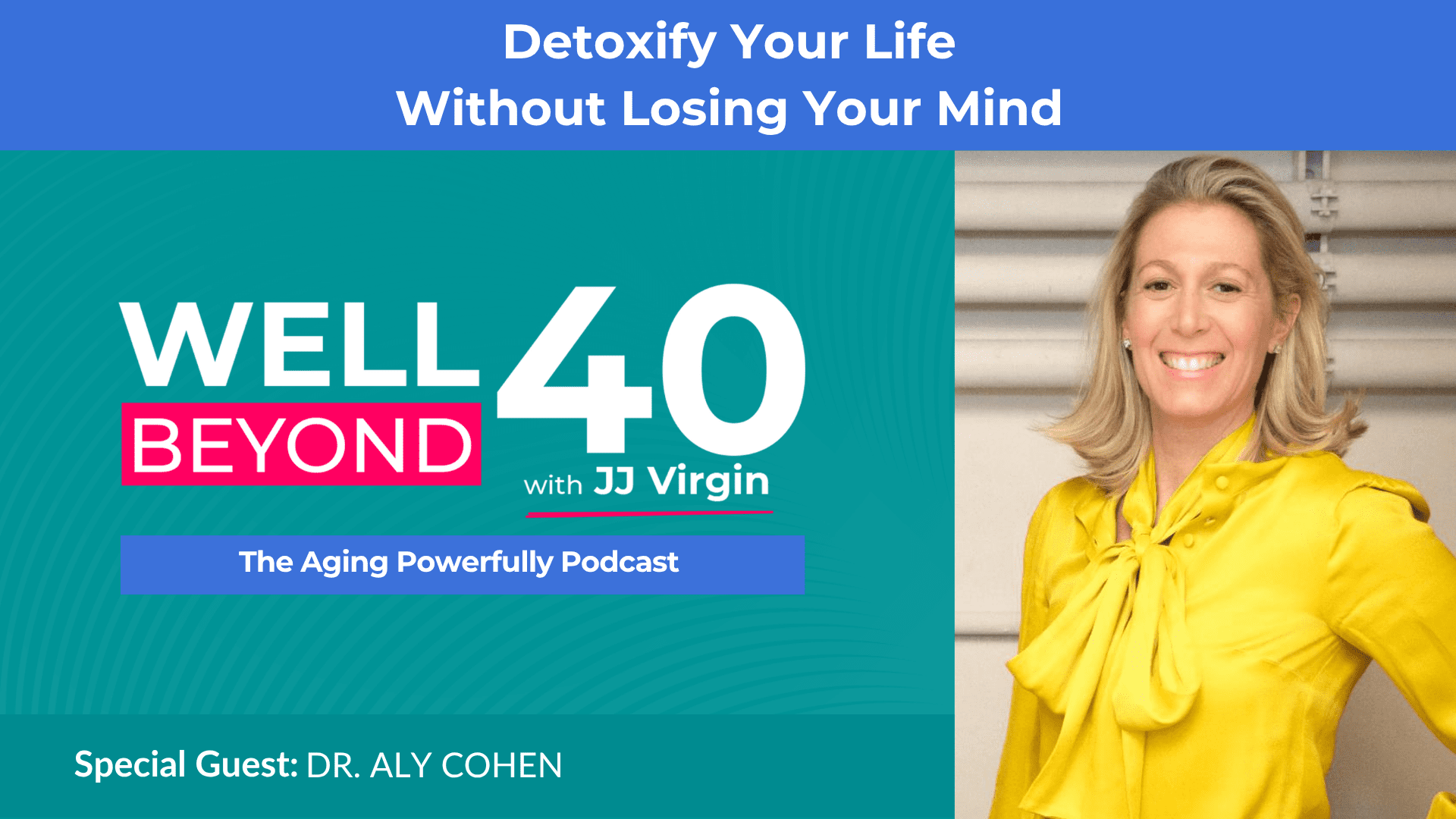What to Eat to Help Preserve Your Strength and Power
Is building muscle a priority for you? If it’s not, it should be.
Muscle is key to a healthier life and maintaining your strength and power in your 40s, 50s, and beyond. In this episode, I share five foods that are scientifically proven to grow muscle and explain why they’re so effective. I even help you figure out the best type of each food to buy for maximum benefit.
If you want to age powerfully, this episode is mission-critical!
Timestamps
00:01:15 – What happens if you aren’t using your muscles
00:02:31 – The trigger for building muscle after 30
00:04:02 – How much protein do you really need?
00:05:32 – My desert-island food
00:07:35 – This protein source provides essential fatty acids
00:10:15 – I recommend this specific type of chicken
00:10:58 – Why whey protein and Greek yogurt are awesome protein sources
00:11:42 – One of the greatest sources of all nine essential amino acids
00:14:31 – My rule for carbs
00:15:46 – The critical thing to remember about insulin
Resources Mentioned in this episode
Watch the FULL VIDEO on my YouTube Channel
Try my protein calculator: jjvirgin.com/7day
Read my book, Sugar Impact Diet
Learn how foods cause leaky gut in The Virgin Diet
Reignite Wellness™ Amino Power Powder: https://store.jjvirgin.com/products/amino-power-powder
Download my FREE Resistance Training Cheat Sheet
Butcherbox grass-fed & grass-finished beef
Track your protein & macros with Cronometer App
Reignite Wellness™ Clean Creatine Powder
Get wild-caught fish and seafood from Vital Choice
Reignite Wellness™ Vitamin D Plus
Reignite Wellness™ All-In-One Shakes
Watch my next video: Best Strength Training Routine for Women Over 40 (+ Free Workout Plan!)
ATHE_Transcript_Ep 624_5 Foods PROVEN to Grow Muscle, Especially As You Age
JJ Virgin: [00:00:00] I’m JJ Virgin, PhD dropout, sorry mom, turned four time New York Times best selling author. Yes, I’m a certified nutrition specialist, fitness hall of famer, and I speak at health conferences and trainings around the globe. But I’m driven by my insatiable curiosity and love of science to keep asking questions, digging for answers, and sharing the information I uncover with as many people as I can.
And that’s why I created the Well Beyond 40 podcast to synthesize and simplify the science of health into actionable strategies to help you thrive. In each episode, we’ll talk about what’s working in the world of wellness, from personalized nutrition and healing your metabolism to healthy aging and prescriptive fitness.
Join me on the journey to better health so you can love how you look and feel right now and have the energy to play full out at 100.[00:01:00]
My friend, Dr. Gabrielle Lyon calls skeletal muscle, the organ of longevity, and she is spot on. Building and supporting skeletal muscle is the key to aging powerfully and being able to continue to do all the things you love to do. But here’s the deal. If you aren’t actively using it, you’re losing it. So starting right now is the time to focus on growing muscle.
Let’s just talk about what happens if you don’t, which is not you, right? So, starting around the age of 30, we start to lose up to 1 percent of our muscle mass a year. But it gets even worse for strength. We lose anywhere from 2 4 percent of our strength and 6 8 percent of our power. Now, one of the reasons this starts to happen is as we age, especially if we’re not actively working out.
We start to separate from something called anabolic resistance. This is when your muscles don’t respond as well to exercise and protein as they used to. So the bottom line here is you got to [00:02:00] work a bit harder to build and maintain muscle as you age, but it’s totally worth it because otherwise you could end up like those stats I talked about and frailty or sarcopenia is a huge risk factor for all cause mortality.
So this is not going to happen to you. Now let’s talk about. How you’re going to build muscle and specifically the foods that can help you the most. So when you’re younger, your hormones help you out a bit, right? They help you build some muscle. But when you start to move into those thirties, you heard the stats.
And beyond, this isn’t the case anymore. Now it’s protein that’s going to be that trigger, and specifically the branch chain amino acid leucine. In fact, Dr. Donald Lehman, who is a renowned protein researcher, discovered that 2. 5 to 3 grams of leucine acts as a trigger that basically turns on a process called muscle protein synthesis.
So every day, your muscle is going through muscle protein turnover. Basically, it’s breaking down and building up. Now, if you’re breaking down [00:03:00] more than you are going through muscle protein synthesis, you’re losing muscle. You’re catabolic. You want to make sure you’re building up more than you’re breaking down.
Right? And how do you do that? Leucine and resistance training. You’re going to need both of those. So, good dietary protein with the right amounts of leucine plus resistance training equals stimulating muscle growth. And remember, you gotta have the resistance training. I know we’re going to be talking food, but you can’t just eat the right food and sit on the couch and build muscle.
Regular resistance training is mission critical to stimulate muscle growth. It’s going to compliment your protein intake because it creates a demand for amino acids to repair and build muscle tissue. In order to build muscle, you got to do more than what your body’s used to. You got to stress the body beyond what it’s used to.
Remember, it’s progressive. So the body has to adapt and you need to have the right fuel to provide the muscles with those building blocks that it [00:04:00] needs then to repair and rebuild. So, first, before we get into those specific foods, let’s talk about how much protein that really is. Now, I created a free protein calculator at jjvirgin.com/7day, so 7 day, and you’ll also get a free 7 day challenge so you can see how easy it is up your protein intake. And I always tell people, eat protein first, that way you make sure you get in what you need. So, How much protein you need is going to vary based on your activity, your age, your weight, your goals, etc.
But basically, I like to shoot for about a gram per pound of target body weight. Here’s the deal, though. All protein is not created equal. Because of the balance of something called essential amino acids, these nine different amino acids, And these amino acids vary based on the type of source. Plant sources tend to be low in some of these like methionine.
And that means if you’re eating more of a plant based diet, you’re going to need more protein overall to [00:05:00] get the right amounts of all the essential amino acids. And remember, we don’t have a storage department for our amino acids. We can store carbs in our muscles as glycogen. We can store fat. I don’t even have to explain that.
But as far as storing amino acids, we then take them from your muscles and we don’t want that. So you need to be eating those amino acids by getting in protein all throughout the day in your two to four meals a day. So as you can tell, What you eat is mission critical for growing muscle. So here are some of my top foods to incorporate into your training diet.
And the first one is probably my favorite at all. In fact, if I was going to get stranded on a desert island, I would want to have my coffee and I’d want to have my grass fed and grass finished beef. And I say grass fed and grass finished. Because all beef is grass fed, it’s the grass finished that makes the difference, right?
So we’ve got to make sure that you’re getting both grass fed, grass finished. Now, when you are eating grass fed, grass finished beef, [00:06:00] it’s going to be lower in fat than regular beef is, although I still say go for the leaner cuts. What’s in this grass fed, grass finished beef that makes it so fantastic for building muscle?
Well, besides getting the perfect balance of essential amino acids and a rich hit of leucine, you’re also getting creatine. Which I believe that everyone should be supplementing with creatine. How’s that for a bold statement, especially women, 30 plus. And it’s also got CLA. Now, creatine is super important for energy production of the cells, and it can also enhance your energy capacity of your muscles during HIIT training and resistance training.
It helps you do those hard workouts. It can help you recover better. And you get about. 0. 3 to 0. 4 grams of creatine in four ounce serving of beef. Now, I still want you to supplement creatine. That’s not enough, but every little bit counts. The other thing you’re getting in grass fed, grass finished beef is CLA.
That’s conjugated linoleic acid, which has been shown in [00:07:00] some studies to promote lean muscle mass and help reduce body fat and especially around the waist. So, what should you be eating? I personally, of course, I get mine all from ButcherBox. I look for grass fed, grass finished. I love to do grass fed burger patties for lunch, super easy.
And then either a filet or New York steak for dinner. Again, I’m going for leaner cuts. Now, four ounces of a lean cut, like New York steak, gives you 37 grams of protein, 3 grams of leucine. So, you see how easy it is to hit your goals when you’re reaching out for this. Next one. Wild fish. And again, just like I just said, grass fed, grass finished, we want to be looking for wild fish.
There might be some farmed out there that’s okay, but it’s a wild card, right? So wild fish, I get mine from Vital Choice. Now, when you’re eating fish, you’re going to get the omega 3s. Right from the fat, you are going to get vitamin D, you’re going to get creatine. By the way, [00:08:00] fish, especially salmon, has a really nice higher level of leucine compared to some of the other fish out there, and you’re going to get a great balance of essential fatty acids.
So really when I think about fish, I think about EPA and DHA, and there’s a lot of buzz right now about EPA and DHA potentially supporting muscle growth. We know reduces inflammation. I kind of think of omega 3s as nature’s anti inflammatory, can help support with bone remodeling and joint health. And of course, it can also help reduce muscle soreness.
And again, early research now, mainly animal research is showing that fish oil could be anabolic. So don’t really see a downside here. I also don’t think you’re going to get enough likely from just eating fish. And so eat fish two to three times a week. And I supplement with two grams of fish oil every day.
The other thing that you’re going to get in fish is vitamin D. And we know that vitamin D can help stimulate muscle protein synthesis. And when you have [00:09:00] optimal levels of this, it’s also associated with improved muscle strength. It can help with muscle contraction and relaxation and can also help with maintaining muscle mass as you age.
It’s also mission critical, of course. For bone health. Now, I also think you should supplement here. I’m a big fan of supplementing with vitamin D3 Here’s the thing. You are going to want to test your vitamin D levels, a 25 hydroxy vitamin D, and you’re going to optimize between 15, 80 NGs per ML. And if you live in a seasonal area, you may need to vary your vitamin D intake throughout the seasons, right?
Because you’re going to get some from the sun. I live in Florida, so for me, I don’t really need to vary it because it’s constant. Now, next up here, how would we dose this? So what I would look at for eating fish is again, you want to go wild. I get mine from Vital Choice. I tend to pretty much stick with salmon, halibut, and sea bass.
I especially like salmon because it’s got this antioxidant [00:10:00] astaxanthin. Remember when you’re working out, you’re creating some oxidative stress. So antioxidants can be super helpful there, but just five ounces of wild salmon can give you 36 grams of protein and 2. 7 grams of leucine. So easy way to hit your targets there.
Now, next up, this is just such an easy go to is pastured chicken. Not so easy to find pastured chicken, but pastured chicken is the one you want to find that’s different than just free range. This means that they’re actually out. Eating what chickens normally eat, which is apparently anything that’s around.
But what we don’t want to do is have chicken that’s been fed GMO corn and soy. So when you’re getting chicken, go for lean. And you’re going to get good leucine, good essential amino acids. This one’s an easy one. Low calorie, easy to do, and it’s high in leucine. A four ounce cooked chicken breast has about one and a half to two grams of leucine, 35 grams of protein, and just 200 calories.
So this is a really easy one. Whey protein and Greek style yogurt [00:11:00] can be amazing for helping build muscle. They are going to give you great leucine, they’re going to give you great balance of essential amino acids, they are fast digesting, quickly absorbed. However, again, remember, you do not want to do that if you’ve got issues with dairy.
Now, when I do this, I tend to do either rotate these in if I’m doing them, I can get intolerant to dairy if I’m not careful with it. And I tend to go fat free and then add in some other more controlled, healthy fats. That really depends on your macros and what you’re looking to do. The nice things you’re also getting with dairy is some vitamin D and some calcium.
So that’s also going to help support good bone health. You got to make sure you’re doing pastured eggs and pastured egg whites. Now, I’m including eggs and egg whites for a reason. Eggs are fantastic. They’re like one of the greatest sources of getting all the nine essential amino acids, plus you’re getting choline in there.
And a large egg has like six [00:12:00] grams of protein in it. And again, what we know about eggs is that if you eat the egg white and the yolk, the egg white is all protein. The yolk’s got some great healthy fats, and it’s also got a rich source of choline. But if you eat it together, you have better protein absorption, probably due to something going on with the bile acid that’s triggered when you eat the yolk.
However, you’re going to eat a lot of eggs to get the amount of protein you need. So one of the ways that I do this, since the egg itself has six grams of protein, the egg white alone is about 3. 6 grams of protein. Depends on the size of the egg, of course. And one egg has, depending on the size of the egg, 0.
5 to 0. 7 grams of leucine. Most of that’s really in that egg white. What I do here is I put a combination of egg yolks and egg whites, because I want the yolk because of that choline. And choline is super important. It supports healthy cell membranes. It’s really important for muscle cells to function properly, that they have those healthy cell membranes, right?
That’s how they grow, contract, and repair [00:13:00] effectively. And it’s also important for muscular contraction. Now, when you’re doing exercise, muscles are going to use two different things for energy, right? They’re going to use stored fat and they’re going to use stored carbs. Choline can help facilitate the breakdown of fats, which of course provides energy for muscle contractions and endurance during workouts, plus choline plays an important role in regulating the levels of certain hormones, such as growth hormone and insulin like growth hormones.
Factor 1 IGF 1. Now these hormones, IGF 1 and a growth hormone, are crucial for muscle protein synthesis, muscle repair, and overall muscle growth. So you’ll want the choline. That’s the bottom line. So here’s how you would do it. If you took two eggs and you took six egg whites, That would get you, from the two eggs, you’d get 12 grams of protein and a gram of leucine.
From the six egg whites, you would get another 22, let’s see, overall you’d have about 22 grams of protein there. And [00:14:00] remember, you’re getting about a half a gram of leucine for each egg or egg white. So you’re getting the leucine you need, you’re getting the protein you need. So that’s how I put it together, is I’ll do a couple eggs, more egg whites.
And I’ll scramble it all up together. Now, if you throw in a little bit of chicken breakfast sausage or some bacon, then you don’t need as many egg whites, right? But you’re just counting it up to make sure you get what you need. Now, obviously I’m focusing on protein here and specifically animal protein that’s going to be rich in leucine and well balanced in the nine essential amino acids.
But I do want to do a shout out for carbs because I think we tend to get really freaked out about carbs. And my rule with carbs is. You don’t want to fear them. You do want to earn them. You want to start with about a base of 100 grams of carbs a day and then add more as you work out more. Carbohydrates, as you know, break down into glucose and then your cells use that glucose as an energy source, right?
When you work out, your body is going [00:15:00] to take glycogen that’s been stored in the muscle and use it as energy. Similarly, it can also do that with liver glycogen. So during exercise, we’re going to get that glycogen out. It’s going to give us that ready, fast fuel source. If you’re doing hard workouts, short, high intensity activities, resistance training, HIIT training, Glycogen is what is getting you through the workout, not fat.
Glycogen is mission critical. And so you want to think of these muscles as your sugar sponge that you work out hard after the workout. Now you’ve got room to put the muscle stores of carbohydrates back so they’re ready for the next workout. And when you eat carbs, you’re going to, your blood sugar is going to go up, right?
That’s going to make your insulin get released from the pancreas. This is critical. I think we’ve gotten really freaked out about insulin, but insulin should come up and come down, right? Because when insulin comes up, it’s going to help promote muscle growth. Insulin helps facilitate the uptake of amino acids.
And you [00:16:00] remember, these are the building blocks of protein into the muscle cells, which is going to help support muscle recovery and growth. Insulin also helps block muscle breakdown. So it’s going to help preserve the muscle tissue you already have. So think of carbs as providing that quick fuel for the workouts and the insulin response with the meals helps with amino acid uptake.
And again, you want low fasting insulin like two to five. But you want that insulin to be able to come up with the meals to help you store the nutrients. Now, speaking of workouts, if you’re not sure where to get started on your strength training, I’ve got you covered. The next video is going to walk you through my resistance training plan designed for women like you that’s going to help you feel better fast and get fit as quickly as possible.
It’s work. It’s going to take time, but, and I’m going to try to help shortcut as much as possible. I’ve got a free download that’s going to help you set up your home gym and tell you exactly what you need to do [00:17:00] during your workout. Be sure to join me next time for more tools, tips, and techniques you can incorporate into everyday life to ensure you look and feel great, and more importantly, that you’re built to last.
And check me out on Instagram, Facebook, YouTube, and Twitter. And my website, jjvirgin.com. And make sure to follow my podcast so you don’t miss a single episode at subscribetojj.com. See you next time.
Hide Transcript

 Subscribe to our show
Subscribe to our show 




